The best Siberian potato varieties and tips for growing them
Potato varieties for cultivation in Siberia are early ripening crops adapted to late spring and early autumn frosts. They are resistant to many diseases and give a rich harvest of tasty tubers. Plants can withstand cold snaps, low air humidity, and have a high keeping quality.
The content of the article
Varieties for growing in Siberia
The level and stability of the yield in such harsh conditions is largely determined by the characteristics of the variety.... All varieties recommended for cultivation in Siberia are immune to the causative agent of potato cancer.
To golden nematode stable Zhukovsky early, Latona, Hostess, Rosara, Fresco, Sarovsky, Bravo, Zekura, Irbitsky, Rozhdestvensky, Ryabinushka, Aramis, Madeline, Felox.

Early
The main characteristics of early varieties that can withstand the Siberian climateare presented in the table:
| Variety | Origin, year of inclusion in the State Register of the Russian Federation | Ripening period, days | Color of tubers | Tuber mass, g | Productivity, c / ha | Starch content,% | Disease resistance |
| Alyona | Russia, 2000 | 45–55 | Red | 86–167 | 172–292 | 15–17 | Immunity to scab, rhizoctonia. Susceptible to late blight. |
| Antonina | Russia, 2005 | 60 | Yellow | 104–153 | 211–300 | 16–20 | Moderate susceptibility to late blight. |
| Zhukovsky early | Russia, 1993 | 60–90 | Pink | 100–120 | 400–450 | 10–12 | Susceptibility to late blight. |
| Priekulsky early | Latvia | 70–75 | White | 100–120 | 200–280 | 13–15 | Susceptibility to late blight, scab, viral diseases. |
| Luck | Russia, 1994 | 45–60 | St. beige | 120–250 | 300–500 | 12–15 | Susceptibility to late blight. |
| Ural early | Russia, 1977 | 60–70 | White | 100–140 | 300–380 | 12–15 | Average susceptibility to late blight. |
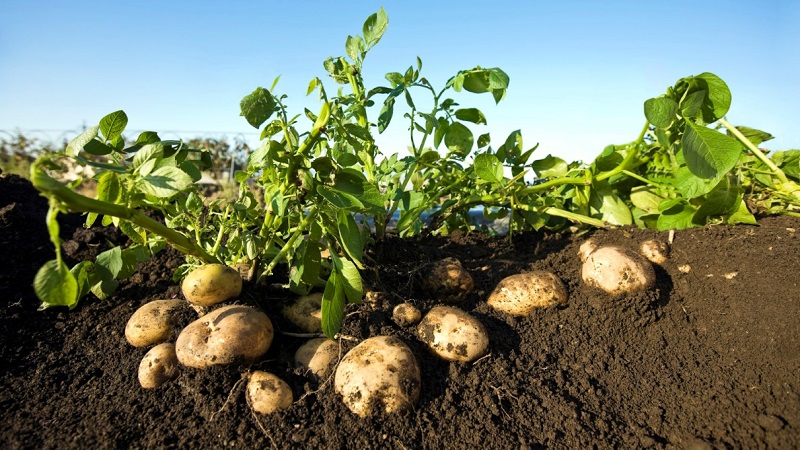
Mid-season
Features of mid-season varieties:
| Variety | Origin, year of inclusion in the State Register of the Russian Federation | Ripening period, days | Color of tubers | Tuber mass, g | Productivity, c / ha | Starch content,% | Disease and pest resistance |
| Adretta | Germany, 1980 | 60–80 | Yellow | 100–150 | 240–400 | 13–18 | Relative resistance to viruses, susceptibility to late blight, scab, rhizoctonia. |
| Lina | Russia, 1998 | 75–85 | Yellow | 105–250 | 213–496 | 11–19 | Susceptible to nematode, resistant to late blight. |
| Lugovskoy | Ukraine, 1987 | 80–90 | St. pink | 85–125 | 300–510 | 12–19 | Insufficient immunity to late blight, scab, black leg, viruses. |
| Nevsky | Russia, 1982 | 70–85 | St. beige | 90–130 | 380–500 | 10–12 | Moderate susceptibility to late blight. |
| Svitanok Kiev | Ukraine, 1987 | 85–105 | St. red-violet | 100–170 | 350–450 | 16–19 | Immunity to black scab, average resistance to black leg, viruses, susceptibility to late blight. |
| Hostess | Russia, 2009 | 80–100 | Red | 101–179 | 178–355 | 17–22 | Resistant to cancer, nematode. |
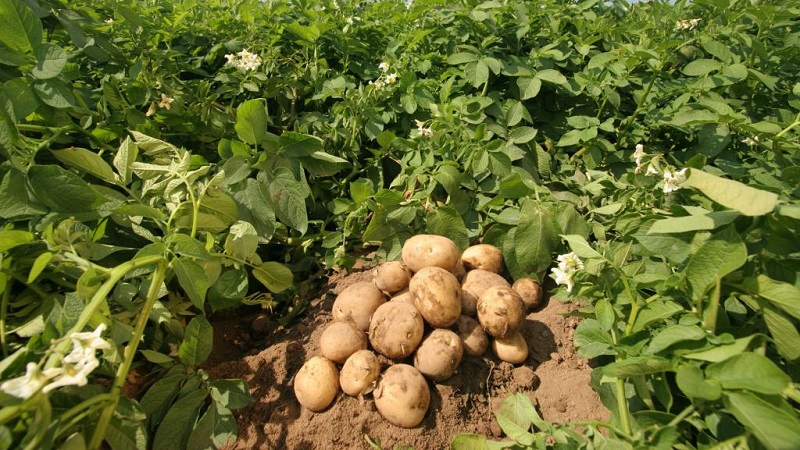
Universal
Valuable traits of versatile varieties:
| Variety | Origin, year of inclusion in the State Register of the Russian Federation | Ripening period, days | Color of tubers | Tuber mass, g | Productivity, c / ha | Starch content,% | Disease resistance |
| Latona | Netherlands, 1996 | 65–80 | Yellow | 85–135 | 291–300 | 12–16 | Average immunity to viruses, dry and ring rot, weak - to scab, late blight. |
| Rosara | Germany, 1996 | 60–70 | Red | 80–115 | 202–310 | 12–16 | Slight susceptibility to late blight and scab. |
| Timo Hankkiyan | Finland, 1999 | 50 | Yellow | 65–120 | 150–233 | 13–14 | Susceptibility to late blight, viruses. |
| Fresco | Netherlands, 1994 | 60–70 | Yellow | 100–130 | 200–390 | 12–17 | Average resistance to viruses, scab, rhizoctonia, weak - to late blight. |
Potato tubers contain 22-25% dry matter, including:
- starch - 70-80%;
- protein with essential amino acids - 2-3%;
- fiber - 1%;
- fats - 0.2-0.3%;
- mineral salts of calcium, iron, magnesium, sulfur, iodine - 1%;
- vitamins C, A, PP, K, group B.
The daily requirement for vitamin C is provided by a serving of boiled potatoes weighing 300 g, and essential amino acids - 600 g.
For Western Siberia
It is a more culture-friendly region: summer temperature here reaches + 20 ° C and above.
Sarovskiy
The variety of domestic selection is the most adapted to the weather conditions of the region... For 60–70 days it gives 112–247 c / ha.
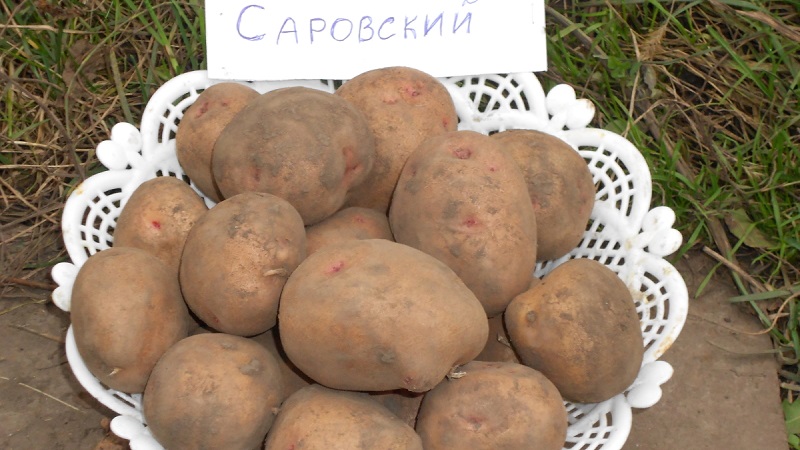
The average weight of red rounded-oval tubers is 95-150 g... The yellow pulp contains 14-18% starch; it does not darken during cooking. Potato keeping quality is 96%. The variety is resistant to crayfish and golden potato nematode, wrinkled mosaic and leaf curling, susceptible to late blight.
Baron
An early ripe variety was created in the Ural Research Institute of Agriculture, included in the State Register in 2006... Marketable yield - 113-237 kg / ha. Yellow tubers weighing 110-190 g with white flesh and good taste contain 13-15% starch. The Baron is susceptible to late blight and is affected by scab.
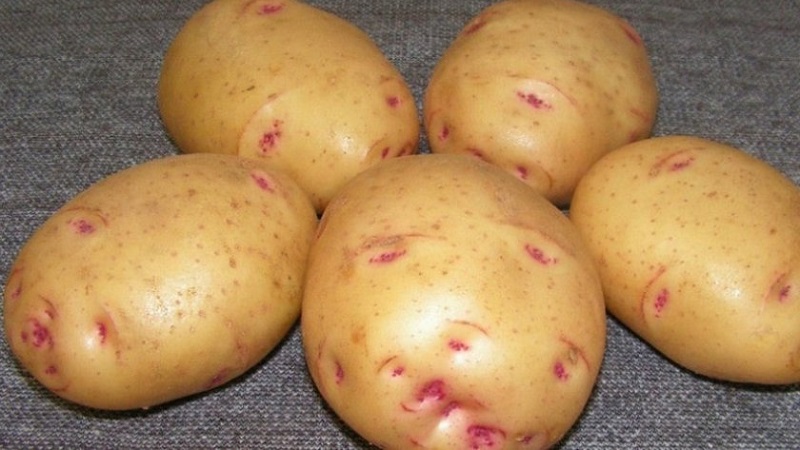
Zekura
Mid-early variety Zekura of German origin, it is not susceptible to common scab, late blight and severe forms of viral diseases. Vegetables ripen in 90-100 days... Oblong yellow tubers weighing 60–150 g contain 13–18% starch. Productivity - 195-323 kg / ha.
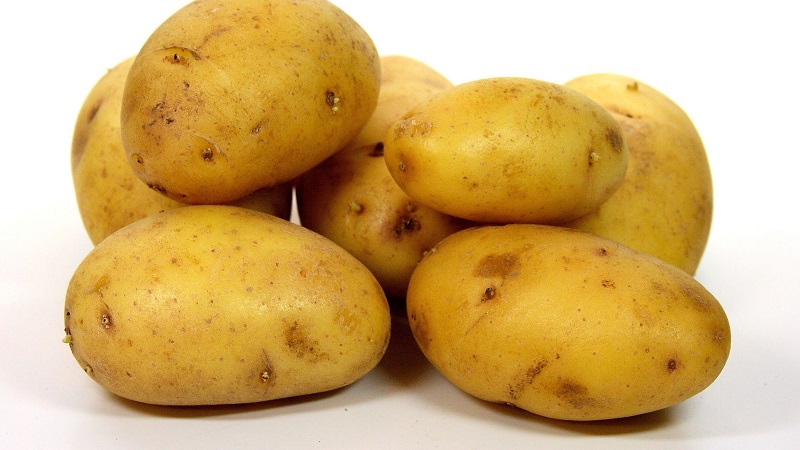
Irbit
The mid-season Irbitsky was bred in the Ural Research Institute of Agriculture, in 2012 it was entered in the State Register... Differs in high yield, up to 400 c / ha, immunity to wrinkled and banded mosaic, leaf-rolling virus. The mass of tubers with red skin is 108–185 g, starch content is 13–17%.
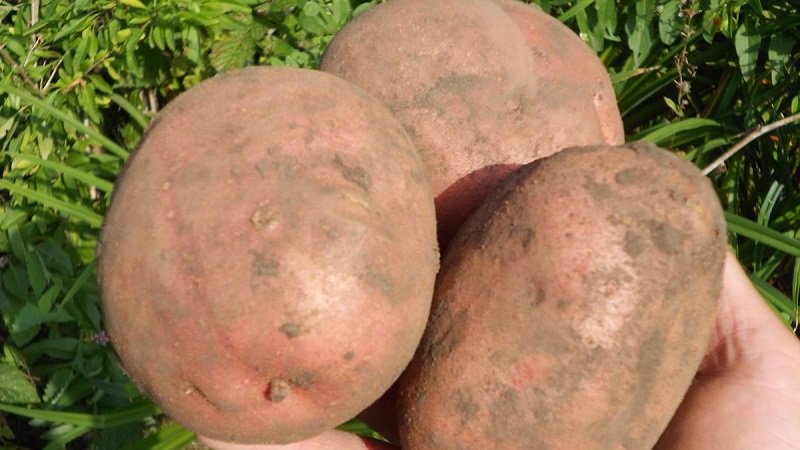
Kamensky
Early culture, created on the basis of the Ural Research Institute of Agriculture, entered in the State Register of the Russian Federation in 2009... The variety is resistant to wrinkled and banded mosaics, leaf curling, susceptible to late blight and nematode. The peel is red, the flesh is light yellow. Tuber weight - 95-110 g. Starch content - 12-17%. Marketable yield - 185 kg / ha.
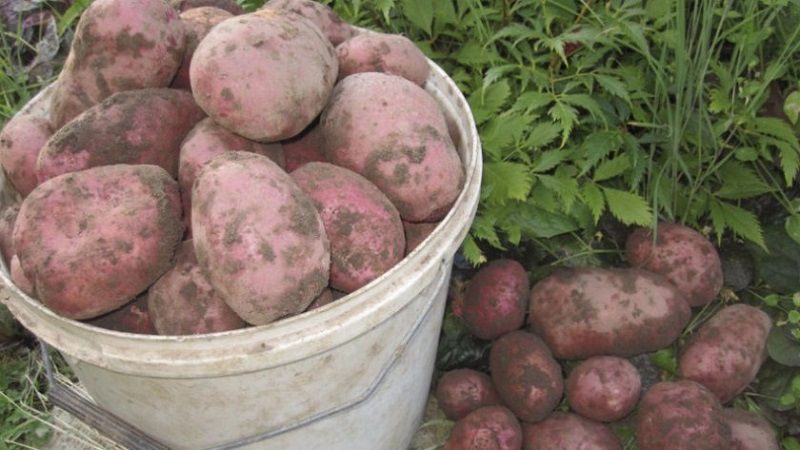
Christmas
The mid-early variety was created by the Leningrad Research Institute of Agriculture, in 1993 it was included in the register of approved... Rozhdestvensky is immune to potato nematode, moderately resistant to viral diseases of phytophthora and fusarium. The skin of the tubers is light beige, the pulp is creamy with a starch content of 14–16%. Vegetable weight - 95 g, yield - 330-430 kg / ha.
Ryabinushka
Was brought out on the basis of the "Vsevolozhsk selection station", in 2007 it was included in the State Register... Productivity - 220-234 kg / ha. The maximum indicator (396 c / ha) was obtained in the Moscow region. Tubers are oval with small eyes, smooth red skin, weighing 90–135 g. Creamy pulp contains up to 15% starch. The variety is resistant to cancer and nematode, susceptible to late blight.

For Eastern Siberia
Crops for this region are more cold hardy, while giving a rich harvest.
Aramis
This mid-season variety for table purposes was created by scientists of the Krasnoyarsk State Agrarian University together with the All-Russian Research Institute of Potato Farming named after A.G. Lorkha. The yield is 166–250 kg / ha. The color of vegetables is yellow, weight - 100-156 g, starchiness - 14-16%. Aramis is resistant to striped mosaic, leaf twisting, and is subject to late blight.
Borus 2
Was brought to the Research Institute of Agrarian Problems of Khakassia, in 2005 it was included in the State Register... Creamy red tubers contain 13-15% starch. The average weight of potatoes is 100–140 g. From 1 hectare, 190–250 centners are harvested. The mid-early variety is susceptible to golden potato nematode, late blight, resistant to the causative agent of cancer.
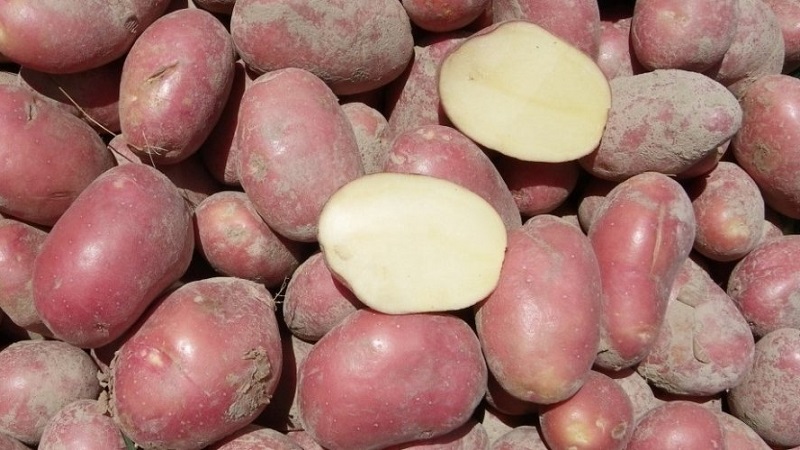
Spring white
An early variety of domestic selection was entered in the State Register back in 1994... Light beige tubers weighing 100–180 g contain up to 15% starch and have good keeping quality. The culture is exposed to alternaria, scab, late blight, viruses.
Madeline
Early Madeline of Dutch selection yields yellow tubers weighing 84–120 g up to 232 kg / ha. Ripens at 45–55 days. The starch content of vegetables is 12-15%. Keeping quality is high, 91%. The variety is susceptible to late blight, resistant to banded mosaic.
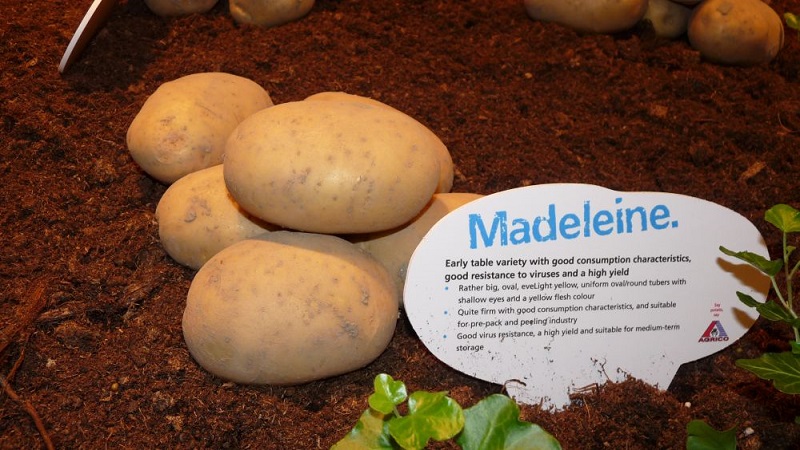
Nakra
Mid-season potatoes were created by Siberian scientists, in 2000 they were included in the register of approved... The cultivar is susceptible to golden nematodes and late blight. From 1 hectare harvested up to 308 centners of red tubers weighing 65-160 g. Starch content is high, 18-22%. Keeping quality is 95%.
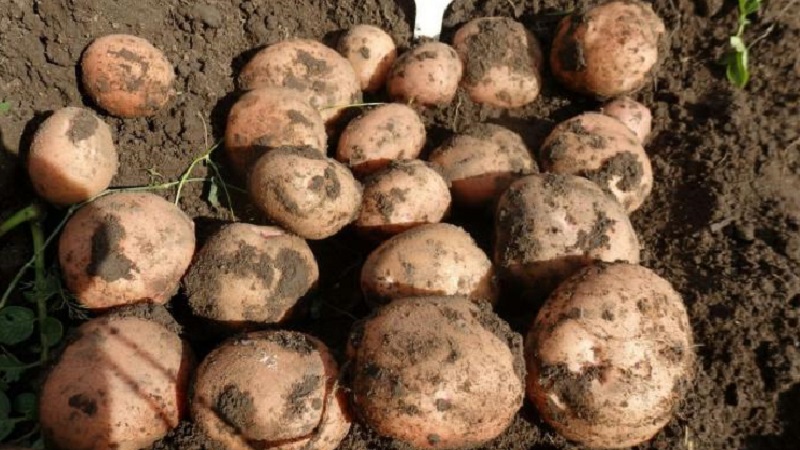
Felox
An early ripe productive variety from Germany has been grown in Russia since 1999... Productivity - 248 c / ha, maximum 591 c / ha were obtained in the Samara region. Tubers are elongated-oval yellow with excellent taste, weighing 90–115 g and starch content up to 17%. Felox occasionally undergoes late blight.
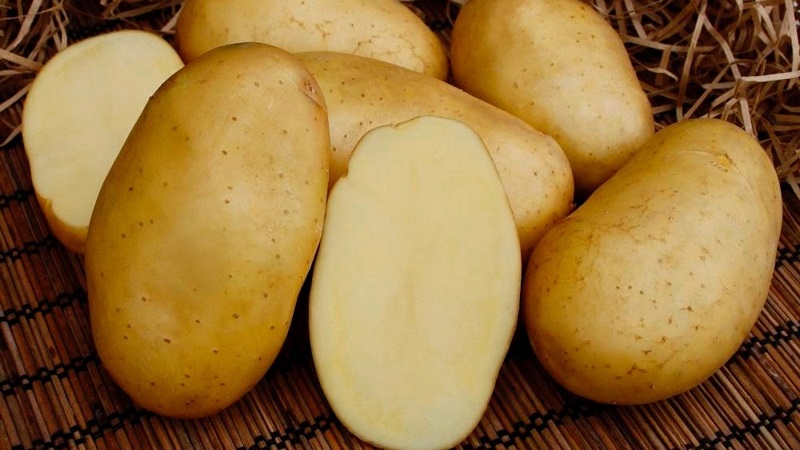
Yakutian woman
Early maturing Yakutian, bred by VNIIKH them. A.G. Lorkha together with the Yakutsk Research Institute of Agriculture named after M.G.Safronova, susceptible to golden potato nematode, moderately resistant to late blight... Oval-round tubers of red color with white flesh, weighing 80-180 g, contain 11-13% starch. The maximum yield reaches 356 c / ha.
Main advantages and disadvantages
The varieties recommended for cultivation in Siberia tolerate drought, heat and cold well. However with high soil and air moisture, tubers accumulate insufficient dry matter, which badly affects the taste and spreadiness.
In such conditions, it is better to grow early maturing varieties., which in a short summer fully reveal their genetic potential, manage to form a crop before the mass development of late blight.
Planting and growing
The best precursors for potatoes - cereals, legumes, cabbage. To prevent the spread of diseases, the vegetable is returned to its original place after 4 years.
Training
Seed tubers begin to cook 30-40 days before planting:
- The potatoes are examined, specimens with signs of disease and degeneration are removed (outgrowths, a pointed top, weak eyes, their displacement to 1 side).
- The vegetables are washed and dried.
- Immerse for 1 minute in a disinfecting solution: dissolve 5 g of copper sulfate and 200 g of boric acid in 10 liters of water.
- Lay out for germination at + 15 ... + 20 ° C in complete darkness.
- Tubers with strong sprouts are selected for landscaping and light germination.
Landing
The site is chosen illuminated, with loose and light soil.... In the fall, the earth is dug up together with manure, in the spring, compost, peat, humus or bird droppings are introduced (5 kg per 1 m2).
Important! If the manure application rate is exceeded up to 12-16 kg / m², the content of starch, vitamins and mineral salts in the tubers decreases.
For full development, potatoes need a pH of 5-6, and Siberian soils have a natural acidity of 3.5-4. For this reason, the soil is limed with dolomite flour.
A crop is planted when the ground warms up to + 6 ... + 8 ° C at a depth of 12-15 cm... In areas with sufficient moisture, potatoes are planted in ridges; in arid places, a smooth planting is used. 10-15 g of nitrophoska are added to the pits. Tubers are buried to a depth of 10 cm, between the holes they are kept at 30-40 cm, between the rows - 60-70 cm.
Growing features
Even before the emergence of shoots, the earth is loosenedto provide oxygen to the tubers. Weeds are removed periodically.
Attention! Due to the long pre-emergence period of potatoes in large areas, it is important to harrow the soil. This loosens the dense crust, removes weeds, and ensures the exchange of soil and atmospheric air.
The nuances of care
Potatoes are regularly weeded, cleaned of weeds... Hilling is carried out as the bushes grow up to 15-18 cm and only under conditions of sufficient moisture: this is how additional stolons are formed on the lower parts of the stem, which increases the yield. In dry conditions, the procedure additionally dries up the soil.
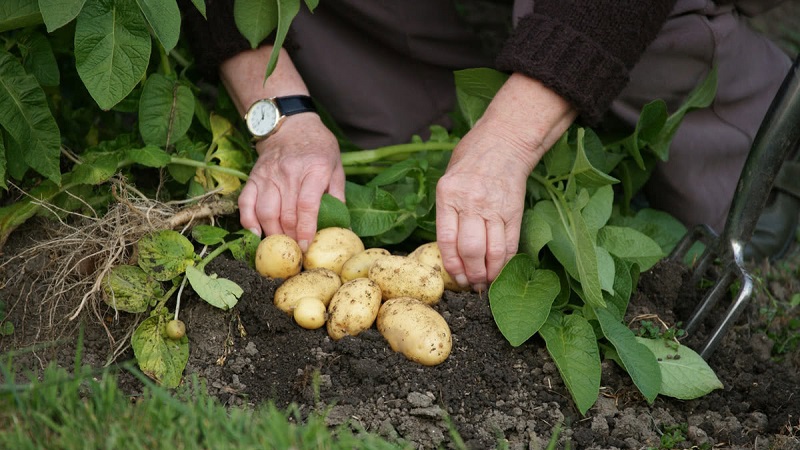
Water the culture 2-3 times during the entire growth period (use 3-4 liters of water per bush):
- when the tops reach a height of 15 cm;
- with mass flowering.
The next day after moistening, the soil is loosened. After flowering, watering is stopped to reduce the risk of late blight.
Fertilize plantings 2-3 times per season:
- with signs of mineral starvation, but no later than mid-July - by 1 m2 use 1 tsp. ammonium nitrate and 1.5 tbsp. humus;
- in the budding phase, they are fed with wood ash (3 tbsp. l. per 1 m2) and potassium sulfate (1 tsp);
- during flowering, a solution of 500 ml of water is introduced under each bush, 2 tbsp. l. superphosphate and 1 tbsp. mullein.
If the tops are actively growing, add 1 tbsp. ash per 1 m2 row spacing, spud planting and temporarily stop watering.
Disease and pest control
For the prevention of late blight potatoes are sprayed over the tops with copper sulfate or 1% Bordeaux liquid. To combat fungal diseases, fungicides are used: "Arcerid", "Ridomil".
To prevent the appearance of a nematode observe the rules of crop rotation, in the fall they clear the land of plant residues, disinfect seed tubers, garden tools. Chemicals (for example, "Bazudin") are used only in advanced cases.
Harvesting and storage
Early varieties ripen in the first half of August, as evidenced by the lodging of the tops... If the site is infected with late blight, the green foliage is sprayed with a solution of copper sulfate, and a week later they start digging tubers.
How and when to collect
Harvesting begins when 90% of the plants reach physiological maturity, the air temperature is not lower than + 5 ° С, the soil at the tuber depth is not lower than + 10 ° С.
Important! The tops are removed 4–6 days before the vegetables are harvested. This technique prevents the defeat of tubers by late blight.
The dug crop is laid out on a film and dried in the sun... Before being placed in storage, tubers are stored for 10–12 days in a cool room until completely dry and cooled.
Seed potatoes are washed, dried and left for landscaping for 3-4 days in a bright room. The solanine in the skin will protect vegetables from disease.
Storage and keeping quality
2-3 weeks before the laying of the crop, the room cleaned of garbage is whitewashed with lime with the addition of copper sulfate.
During storage, potatoes go through 3 phases: ripening, rest and awakening. The temperature in the room is kept no higher than + 2 ... + 3 ° C, humidity - 80–90%. When the temperature rises to + 4 ° C, the eyes will begin to germinate prematurely.
All varieties recommended for growing in Siberia are stored almost until spring: keeping quality reaches 89–95%.
Growing difficulties
The growing season in Siberia is short, only 78–89 days... In the phase of flowering and tuber formation, the soil moisture should be 70–80%, during the period of starch accumulation - 60–65%. In drought conditions, vegetables are deformed, since in mid-June, autumn-winter moisture reserves are greatly reduced, and summer rains have not yet had time to saturate the soil. Therefore, the beds are mulched, they observe the irrigation regime.
Due to the lack of heat, there is no complete natural withering away of the tops by the time of harvest. Often the growing season is interrupted and ends with the onset of frost or as a result of infection with fungal diseases. The peel of such tubers during harvesting is fragile, starchiness is low.
Tips and Feedback
When choosing a variety, they make sure that the tubers have an increased keeping quality and resistance to mechanical damage.
Important! Under conditions of an unstable climate, combined with a long daylight hours of 16-18 hours, early, mid-early and mid-season varieties grow well in Siberia.
Farmers give recommendations for growing crops in Siberia:
Dmitry, Novosibirsk region: “I plant potatoes in plastic bags. I make holes in advance, pour 15 kg each and hang it on a glazed loggia. One beam can hold several bags with a total weight of up to 80 kg ".
Christina, Tomsk: “I buy potato seeds for Siberia of several varieties at once with different ripening periods, and I grow them at the same time. Unpredictable weather never hurts to get a good harvest. ".
Conclusion
The selection of potato varieties for cultivation in Siberia is aimed at increasing their resistance to harsh climatic conditions, resistance to diseases and pests. With proper preparation of seed material, soil cultivation, adherence to irrigation and feeding regimes, it will be possible to consistently obtain a high yield of tubers with good keeping quality.